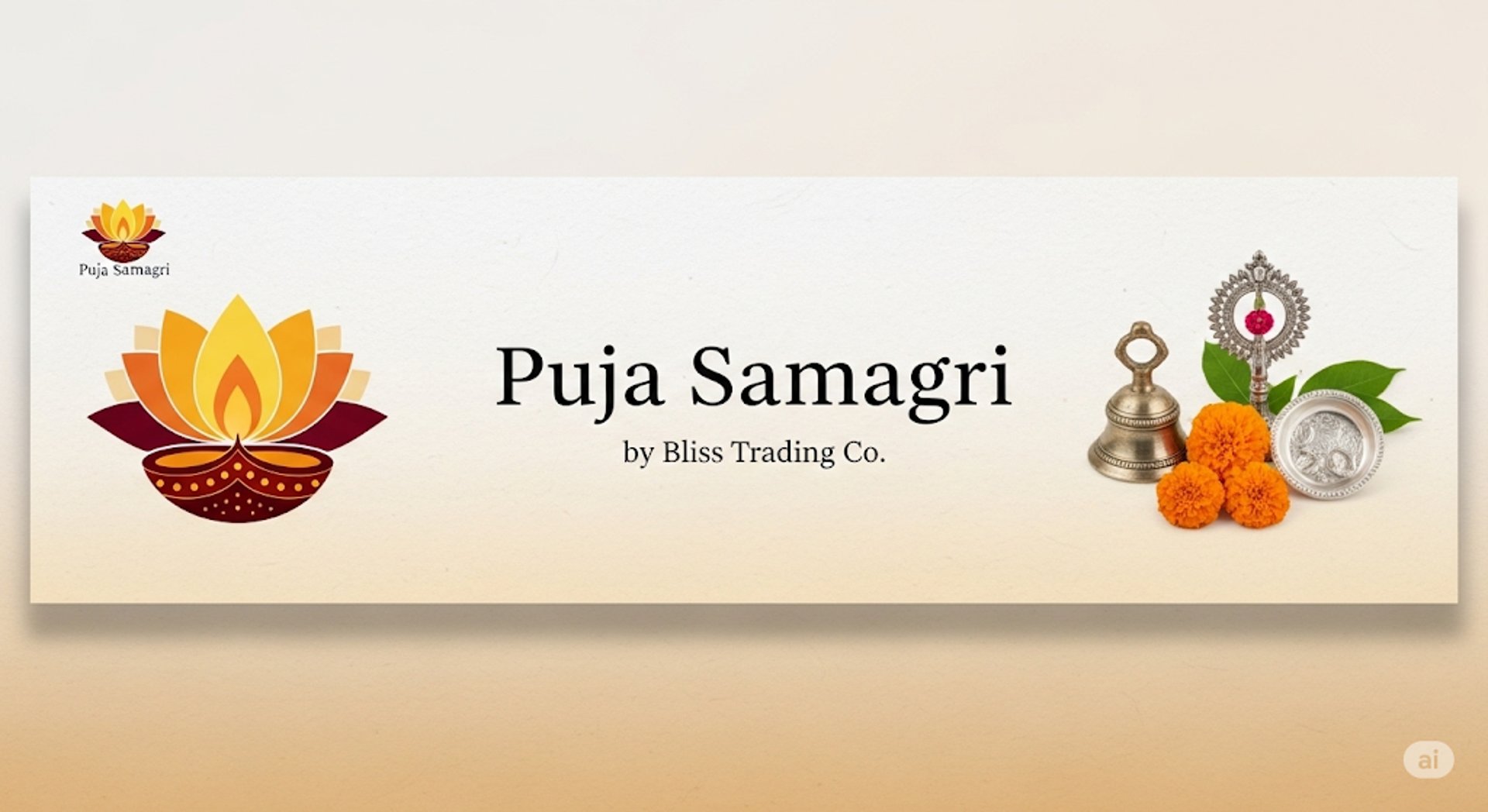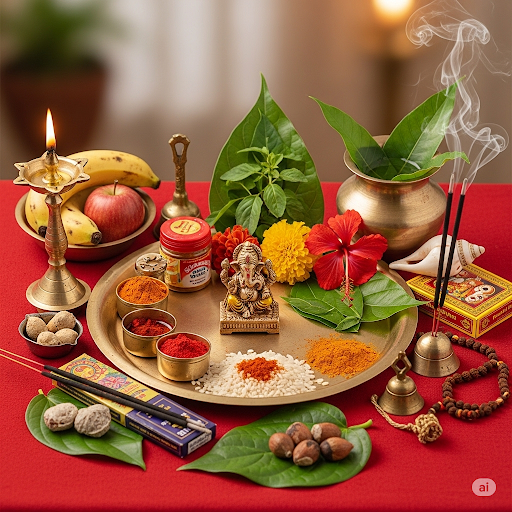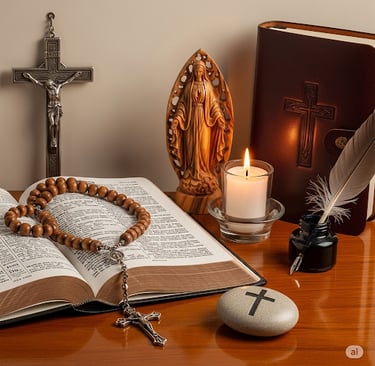tatkalsale.com: India's #1 Online Store for Wholesales & Retails

Indian Puja Samagri (Hinduism)
Essential Items:
Idol or Image of the Deity: The central focus of the puja, serving as a representation of the god or goddess being worshipped.
Diya (Oil Lamp) and Ghee/Oil: Represents the presence of light, knowledge, and the dispelling of darkness. The ghee or oil symbolizes purity and prosperity.
Agarbatti and Dhoop (Incense Sticks): The fragrant smoke purifies the environment, creates a sacred ambiance, and is believed to attract positive energy.
Kumkum, Haldi, and Chandan: These colored powders and paste have unique symbolic meanings. Kumkum (vermilion) represents energy, Haldi (turmeric) symbolizes prosperity, and Chandan (sandalwood paste) is used for its cooling and calming properties. They are often used to make tilak marks on the deity and the devotees.
Flowers and Leaves: Offered as a symbol of devotion, love, and purity. Different flowers and leaves, such as tulsi or bael leaves, are sacred to specific deities.
Naivedya (Food Offering): A food offering, which can include fruits, sweets, or other prepared dishes, is made to the deity as a gesture of gratitude and is later distributed as prasad.
Puja Thali: A plate or tray used to hold and organize all the puja items during the ritual.
Kalash: A pot filled with water and adorned with mango leaves and a coconut, symbolizing prosperity and the life-giving ability of nature.
Camphor (Kapoor): When burned during aarti, its smoke is believed to purify the environment and burn away negativity.
Coconut: Considered a divine fruit, it represents purity, fertility, and the offering of one's ego to the divine.


Christian Prayer Items
Christian prayer items are often used to aid in devotion and remembrance. They are typically not objects of worship themselves, but tools for focus and reflection.
The Bible: The holy scripture of Christianity, containing the Old and New Testaments.
Rosary: A string of beads used primarily by Catholics to count prayers, particularly the "Hail Mary."
Crucifix/Cross: A cross with the figure of Jesus Christ on it (crucifix) or a simple cross, representing Jesus' sacrifice and resurrection.
Prayer Cards and Books: Printed prayers or pictures of saints and Jesus that aid in devotion.
Holy Water: Water that has been blessed by a priest, used for blessings and purification.


Bell (Ghanti): The sound of the bell is rung to invoke the presence of the divine, dispel negative energies, and create a harmonious atmosphere.
Akshata (Rice): Unbroken rice grains, often mixed with kumkum, are offered as a symbol of abundance and are believed to attract the frequencies of various deities.
Holy Water (Ganga Jal): A few drops of water from the Ganges River are used to purify the puja space and items
Japa Mala: Prayer beads used for counting mantras.Puja samagri, a term originating from India, refers to the collection of sacred items and materials used in Hindu worship rituals, known as puja.
The use of puja samagri is not just a custom but a means of expressing devotion, creating a spiritually charged environment, and strengthening one's spiritual journey. Many of these items are also chosen for their purifying properties and natural fragrances, which contribute to a meditative and serene atmosphere. While the specific items may vary depending on the deity, the type of puja, and regional traditions, a common list of puja samagri includes
Website links: Link your websites here -
bholebabaindia.com univacgroupindia.com blisshookahflavor.com hookahindia.com



